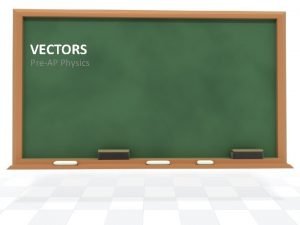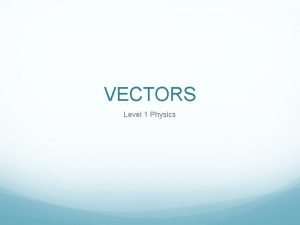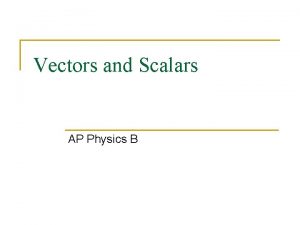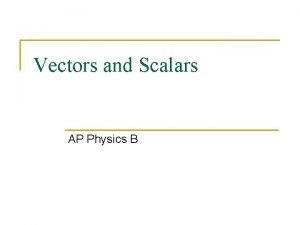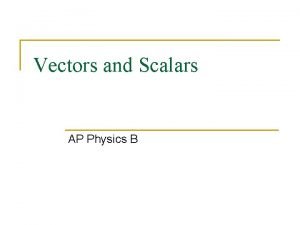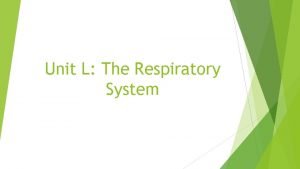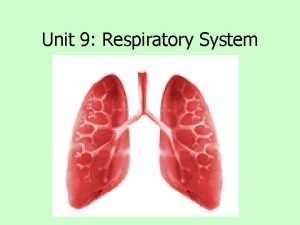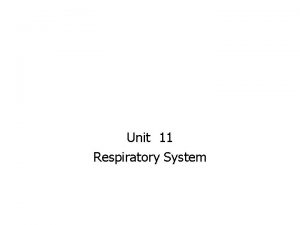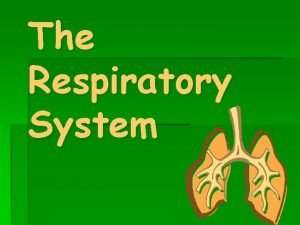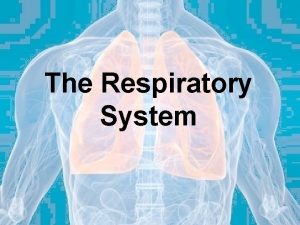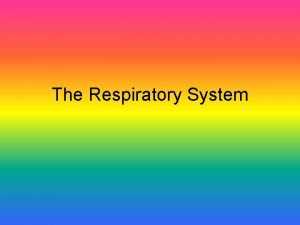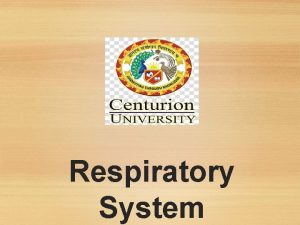Functions of the Respiratory System 1 Moves oxygen













- Slides: 13

Functions of the Respiratory System � 1) Moves oxygen from the outside environment into the body, � 2) Removes carbon dioxide and water from the body. This is a cartoony image of your lungs, the main organs of the respiratory system!

Why the Body Needs Oxygen �Your body needs oxygen to keep you alive, right? But why? �Oxygen is a key player in respiration. �Respiration is not breathing! �Respiration is the process in which oxygen and glucose undergo a complex series of chemical reactions inside cells. �This process of respiration is how your body creates energy for itself! Pretty cool, huh?

Did You Know? �The air you are breathing in right now is made of a mixture of gases. �Only about 21% of the air is oxygen. � 78% is nitrogen. �What percentage are we up to? �The remaining 1% is made up of carbon dioxide, helium, and various other gases.

Path of Air

Path of Air �Luckily, your respiratory system is equipped with tools so that less of that stuff gets in your lungs. �As air travels from the outside environment to the lungs, it passes through the following organs : nose, pharynx, trachea, and bronchi. �It only takes a few seconds!

Nose Functions �Heats the air you breathe in. �Produces mucus that traps dust and bacteria. �Contains cilia (hairs) that sweep the mucus into the throat �Causes you to sneeze so that dust particles and bacteria leave the body.

Pharynx (FAR ingks) �Known as your throat �Shared with the digestive system �Both nose and mouth connect at the pharynx.

Trachea (TRAY kee uh) �Known as your windpipe. �Made of thick rings of cartilage that remain firm to strengthen the trachea and keep it open. �Why do you think it’s not squishy like the esophagus? �Also lined with cilia and mucus �Allows you to cough if there are dust or bacteria irritating your windpipe.

Bronchi & Lungs �Bronchi are the two main branches that lead to the lungs �Bronchitis sound familiar? �Each bronchus leads into a lung where it branches out into smaller and smaller branches. �At the ends of the smallest tubes are bundles of “grapes” called alveoli. �Alveoli are tiny sacs of lung tissue specialized for the movement of gases between air and blood.


Gas Exchange �After air enters the alveoli, oxygen passes through the wall of the alveoli and through the wall of a tiny blood vessel. Carbon dioxide and water pass from the blood into the alveoli.

Diaphragm �A large dome-shaped muscle that plays an important role in breathing located at the base of the lungs. �When you breathe in, the diaphragm moves down. �When you breathe out, the diaphragm moves up.

Larynx (LAR ingks) �Known as the voice box at the top of your trachea. �Holds your vocal chords which produce your voice. �Think of the way a balloon squeaks when you let air through the neck. That’s kind of how your vocal chords work. �Muscles makes your vocal chords contract and the movement makes the air molecules vibrate and create a sound!
 Conducting zone respiratory
Conducting zone respiratory Site:slidetodoc.com
Site:slidetodoc.com Physiology of respiration
Physiology of respiration Tiny air sacs at the end of the bronchioles
Tiny air sacs at the end of the bronchioles Circulatory system and respiratory system work together
Circulatory system and respiratory system work together A bear searching for food wanders 35 meters east
A bear searching for food wanders 35 meters east A bear searching for food wanders 35 meters east
A bear searching for food wanders 35 meters east Carl yaztremski
Carl yaztremski Vectors and scalars in physics
Vectors and scalars in physics A storm system moves 5000 km due east
A storm system moves 5000 km due east Ap physics vector problems
Ap physics vector problems Bozeman respiratory system
Bozeman respiratory system Unit 9 respiratory system
Unit 9 respiratory system Diagnostic test of respiratory system
Diagnostic test of respiratory system





